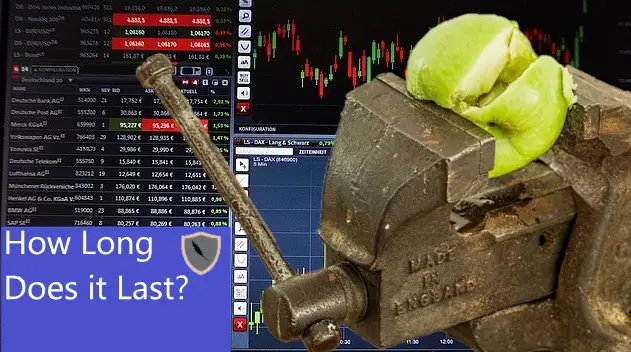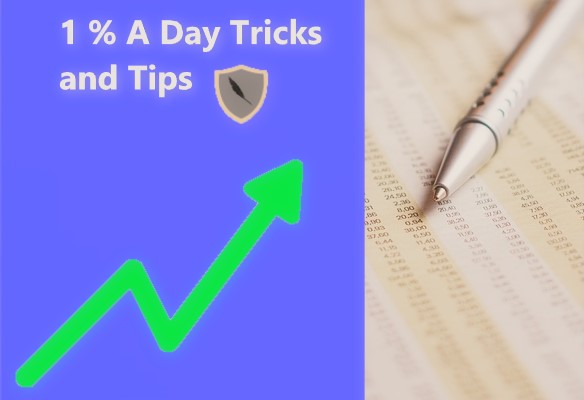“Beating the market” can simply be explained as returning a higher return than someone who simply passively invests. Normally the number you have to beat is around 8-10% per year. It’s hard to beat this number continuously, however with a little bit of practice you can start picking stocks to beat the market average.
The top 3 tips on picking stocks that beat market average are to buy mid-cap growth stocks, strategically collect option premium, and invest in retail trader volatility. Each of these options is going to expose you to much larger total returns but are tricky to perform correctly and open you up to risk. This article shows you how to navigate these steps properly.
Here at Chronohistoria I teach people how to return higher than normal market returns while managing risk. If you like the content feel free to subscribe to the free newsletter, I use it to keep people up to date on articles.
Let’s jump right into the top 3 tips on picking stocks that beat market average.
What is the Normal Market Average We Have to Beat?
The normal market return of the U.S S&P 500 index from 1871 to 2020 with dividends reinvested was 9.25%. (Source)
This means that whatever stocks we pick to put in our portfolio will have to return a yearly return that is higher than 9.25%. This sounds easy but in practice is extremely hard as the markets across the world are generally pretty efficient at allocating capital. I wrote an article on the investment methodology behind this efficient market theory, check it out if you’re interested. (you can find it by clicking here)
So, anything we do is going to have to return higher than 9.25% per year every year. This means that we are going to have to take an active management position within our portfolio. We can’t just buy stocks and let them grow, we are going to have to actively buy, sell, average, and hedge our positions to get above 9.25%.
While there are many ways to do this, the absolute 3 easiest ways are to buy mid-cap growth stocks, strategically collect option premiums, and to invest in retail trader volatility. The other ways to get above the 9.25% threshold are to use advanced algorithms, activist investing, and global-macro. These strategies are out of reach for most investors so I’m not going to focus on them in this article. (If interested I wrote an article on text mining financial reports, you can find it here)
Let’s begin.
Tip 1: Buy Mid-Cap Growth Stocks
Definition of mid-cap stock: A mid-cap stock is a stock whose market cap is between $2 billion and $10 billion.
Mid-Cap growth stocks is the ‘goldi-locks’ zone for investing. This zone is where you will find the most economic growth potential to inherent risk in the position. The reason mid-caps are called the goldi-locks zone is because it is just the right place for retail investors to be.
The small-caps are incredibly risky to invest in but can net a huge return. Generally these companies will only exist for a couple years and have one or two products. If one of these products fail, an executive leaves, or funding runs out you will lose your entire investment and never beat the market average of 9.25%.
Large-caps on the other hand are too covered by the market. Because of this the market is incredibly fast at allocating capital to these companies, thus removing your ability to get in before the stock goes up or down. Essentially the stock is priced just right and moves very little. If you invest in these companies you will be at normal market average return (+ or – 1-2%).
Mid-caps however are literally the perfect place for you to be. This is because mid-caps have the stable revenue base of the large caps while also having the possibility of rapid economic growth similar to the small caps.
So what’s the catch then? Why doesn’t everyone invest in mid-caps?
The answer is two parts. First, mid-caps are not as stable as large caps; there is more risk in investing. Second, 99% of retail investors don’t want to put in the time to research what mid-caps are good picks. It takes time to learn how to research and value a mid-cap stock.
If you’re looking for an article that goes into substantial detail on how to value and pick these mid-caps properly, then check out my article on mid-cap valuation. (click here)
Tip 2: Strategically Collect Option Premium
Definition of Option Premium: Option premium is when you sell option contracts, you will make money every day the contract is not exercised. When done correctly it’s a great way to ‘double-dip’ on the possible returns of good investments.
What if I told you that there was a way to make money in the stock market with a 80-90% chance of success, every time. Like everything there is a catch, and in this case you need a lot of upfront capital in case you are wrong 20% of the time.
In steps the strategy of selling and collecting option premiums. Here we are going to find a stock/asset that we know is going to go either up or down and bet that it will. However we will sell an option contract that is OTM in our favor. If done properly we can expect to get a 17% return over the lifetime of the contract on the capital allocated.
Let me show you how this works.
The above image is of the SPY over the past 20 years. The SPY tracks the overall health of the U.S economy.
We can pretty safely bet that the U.S will continue to be profitable. In this case we can sell a contract that states “we will buy 100 shares of SPY if it falls below $200 a share.” This contract is called an option put, and every day the SPY does not fall below the price of $200 we will make money.
This is called strategically collecting option premium and is one of the many ways that professional investors/hedge funds beat the market average. I wrote an entire article that provides the theory, methodology, and steps on how to do this on the SPY to go well above normal market average return. (Click here for the article)
Tip 3: Invest in Retail Trader Volatility
Definition of Retail Trader Volatility: Retail trader volatility is exactly what it sounds like. Retail traders pile into a stock and cause it to shoot up in price by 20-200% overnight.
The above image is of the now famous Gamestop short squeeze that happened in January of 2021. In about two weeks GME went from a price of $30-40 to a massive $483-$500. If you invested at the right time you will have made a total return of 1,250%. ($10,000 into $125,000)
Options returned even higher and with an investment of $10,000 at the right time you would have become a millionaire within two weeks.
So how do we invest off this retail trader induced volatility? The main way to do this is to find stocks that are gaining traction in online forums where retail traders hang out. These are forums such as StockTwits, Twitter, and Reddit.
You can figure out what people are talking about there and get a feeling for what stocks retail investors are going to be looking at. Once you know that you need to figure out what the likelihood of the stock ‘exploding is going to be.’ The best way to do this is to look up the float, short percentage, and average volume.
It’s a skill that takes time to master but once you understand this you can start positioning an investment long before the explosion happens. When done properly you will return well above market average. Below are some examples of me doing this.
Turning $200 into $4,000 in 10 minutes with GME.
In the above image I bought vertical option calls on GME that were far OTM right before the explosion happened. Because of how options worked I managed to turn $400 into $4,000 in a couple minutes off an explosion in implied volatility.
I used a Python program to scrape web data from social media sources to identify when GME was going to explode (more mentions/responses on a minute by minute period). I then positioned an investment to explode with the volatility jump.
Turning $300 into $3,000 overnight on Wendy’s Calls
In the above image I bought far OTM Wendy’s calls after posting funny research on Reddit. What ended up happening was my research went viral and ended up causing a snowball effect in the market that caused Wendy’s to shoot up 30% in pre-market hours.
Here is a video of Cramer covering the “Chillznday” effect. (here is a link to the Reddit post)
Covering Smile Direct Club Before it Exploded
I didn’t actually make any money off this investment. I wrote an article about how the same thing that happened to GME was about to happen on Smile Direct Club. About two days after the article was published SDC exploded.
If you had invested $10,000 at the right time you probably could have paid off a decent house. (Here is a link to the SDC article)
Learning how to invest off retail investor volatility is a great way to start making huge returns and beat the average market. Its risky however and should be approached with caution.
Conclusion
There you have it, the top 3 tips on picking stocks that beat market average. Each of the above steps comes with varying levels of risk but will get you well above normal market returns.
I use these 3 tips to help my portfolio’s generate higher than normal market returns and I hope that they will serve you well. Here at Chronohistoria I teach people how to generate Alpha (above normal market returns) in their portfolios.
If you like content like this then feel free to subscribe to the free newsletter. It’s used to keep everyone updated on happenings in the market.
Further, you can check out some of the other articles below!
-
How Long Does a Short Squeeze Last? (3 Answers)

What is the time frame for you short squeeze? Well here is everything you will ever need to know to determine how long it will last.
-
Why You Still Own a Stock After It’s Delisted and How to Sell It

Do you still own a stock after its delisted? How do you sell it? Don’t worry the stock is still worth money and here is how to sell.
-
Can You Make 1% A Day in the Stock Market? (3 Steps)

Making 1% a day in the stock market is hard but defiantly doable. Here are 3 simple steps to helping you achieve this return.
Until next time, I wish you the best of luck in your investing journey.
Sincerely,


